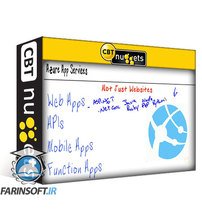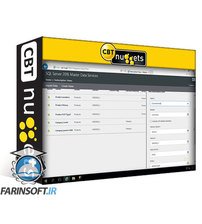جمع جزء: 189,000 تومان
- × 1 عدد: فیلم آموزش Azure App Services - 189,000 تومان
This intermediate DP-500 prepares learners to take full control of a data analytics solution at the largest possible scale using Microsoft Power BI and tools available in Microsoft Azure.
If you're at the point in your career where you're considering a job in data analytics solutions that work at the enterprise level, you may think the skills necessary to be excellent in the field come naturally to some people and not others. But that's not true – designing, creating, and deploying large data analytics solutions are skills you can learn and practice.
در این روش نیاز به افزودن محصول به سبد خرید و تکمیل اطلاعات نیست و شما پس از وارد کردن ایمیل خود و طی کردن مراحل پرداخت لینک های دریافت محصولات را در ایمیل خود دریافت خواهید کرد.

آموزش AZ-800: مدیریت زیرساخت های Hybrid Windows Server
-main-resized.jpg)
فیلم یادگیری کامل Microsoft Certified Azure Administrator Associate AZ-104

Microsoft Certified Azure Administrator Associate (AZ-104) Online Training

فیلم آموزش Azure App Services

Microsoft Certified: Azure Database Administrator Associate Online Training
--Understanding-the-SDWAN-vManage-API-main-resized.jpg)
آموزش کامل 350-401 ENCOR : درک SD-WAN vManage API

آموزش افزایش کیفیت داده ها در Microsoft SQL

AWS Certified Advanced Networking – Specialty (ANS-C01) Online Training

کورس امنیت CCNP

نحوه عیب یابی پروتکل BGP
✨ تا ۷۰% تخفیف با شارژ کیف پول 🎁
مشاهده پلن ها